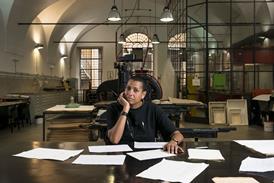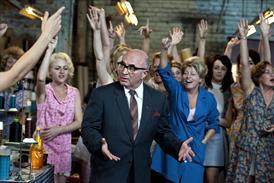The tragic case of Awaab Ishak (pictured above) has brought into sharp focus the importance of tackling damp, condensation and mould in the home. Awaab was two when he died from exposure to mould in a flat of which Rochdale Boroughwide Housing was the landlord.

Rochdale is yet another social housing association operating a housing stock that was once under the jurisdiction of local government. Social housing associations are not all bad but some are. This is not a polemic against social housing groups. Most of them do a reasonable job on a tight budget but there is plenty of work to do.
Incredibly, fitness for human habitation only became a legal imperative available in private law with the Homes (Fitness for Habitation) Act 2018, which came into force in March 2020 for most lettings in England. It does not apply to Wales which still lags behind, with its own comparative laws due to commence yesterday (1 December) by way of the Renting Homes (Wales) Act 2016. Ironically, South Wales has some of the most deprived communities in the UK.
The most vulnerable in society stand to benefit from these statutory improvements, which are long overdue in a developed western country. The right to live in a home fit for a human would seem like a contender for the most basic of human rights and yet it has taken the England and Wales jurisdiction until deep into the 21st-century to recognise this.
The legislation is linked to the government’s Housing Health and Safety Rating System (HHSRS) and its 29 hazards, the first of which is damp and mould growth. It then ranges through excess cold and heat, asbestos, noise, fire, food safety and many others before landing on structural collapse as a fitting testament to the worst things that can happen to a home.
Of course it is important to apply these rules with common sense. All houses have condensation and all accommodation has potential hazards lurking within. The most common cause of condensation is breathing, followed by sweating, washing and cooking. These activities are fairly unavoidable. Landlords have a habit of blaming tenants for condensation but to live is to expel atmospheric moisture and it has been that way for a very long time. Human beings are 70% water and so this is an ancient problem in a modern world. The UK is a weather-beaten wet, cold island. It will always have humidity in the air and cold surfaces to catch those tiny droplets and convert them back to wet puddles, which are such a delight to fungus and spores. No part of Earth is exempt from this phenomenon but the British Isles are a dreamland for it to unleash its power.
That said, there are things which tenants can do to abate the problem and this needs a campaign of education which government has to lead. The self-help solutions or partial solutions are as simple as opening windows, heating the property, drying clothes in an appropriate way (that is, not on the radiator). Tumble dryers should be used if possible in the winter and outdoor drying if weather permits. Wiping the mould away with appropriate cleaning materials is also a crucial form of mitigation. All of this is obvious to the initiated but the initiated are usually well-educated and living in decent homes, rented or otherwise.
However, with utility bills rising as they are, heating and tumble dryers are not always an option. The government does not need me to lecture on the importance of tackling the menace of rising inflation, which has so many ramifications.
Landlords also have a key part to play, with the installation and maintenance of window vents, air bricks and extractor fans. They can also install thermal plasterboard to insulate external walls, thereby reducing the risk of condensation. Double glazing should by now be in every home but it is not. When I was a boy living in an old Victorian house, I could see my breath on a February morning. Today this should be the stuff of legend rather than an ongoing narrative.
Before the new legislation, all of the above were considered improvements for which the landlord was not obliged. Only if something was clearly in disrepair would the landlord become duty-bound to act. Now, if the property has to be improved to bring it out of unfitness then so be it. It remains essential, however, for the tenant to notify the landlord of the problem. This has always been the case with few exceptions.
Overcrowding is also a factor in condensation and mould growth. This is not so easy to fix but it is one of the hazards mentioned. Lack of space has other connotations, from stress to domestic violence, but three people in a bedroom will create more hot air than two. This is an acute problem in London, which is already one of the most overcrowded cities on Earth. The more popular a place becomes, the more ‘brain gain’ it enjoys. It also gains more rats and vermin, but if necessity is the mother of invention the added brain power should find technological solutions to dovetail with legalistic remedies.
Food safety is number 16 on the list. This also overlaps with our subject as mould can infect food. The educational element here is to encourage people to store perishable items in hermetically sealed jars and the like. It goes without saying that food surfaces have to be hygienic.
Damp and mould will also bring infestation in the form of slugs, cockroaches and silverfish, which can truly diminish the quality of life. Landlords will now have to take positive steps to render the property seriously unattractive to such wildlife rather than defer the problem to pest control, which has been the default position for years.
The law has not yet caught up with itself in that the common law is still wrestling with the meaning of fitness for habitation. This is partly due to the absence of such cases passing through the court system during the pandemic. Case law is still thin on the ground but the legislation is wide enough to give creative legal minds scope to be bold and inventive.
So far there has been a reluctance to take on cases which rely solely on sections 9A, 9B and 9C of the Landlord and Tenant Act 1985, as amended by The Homes (Fitness For Human Habitation) Act 2018. Claimant solicitors are creatures of habit and like to know that their faithful friend section 11 of the 1985 act (basic structural disrepair) is there to fall back on.
If Awaab is not to have died in vain, lawyers need to think of ways to push the agenda on behalf of people like him. The threshold for what is considered unfit is likely to be lower in light of his passing. Nobody wants to see another death. Infant death is extreme and rare but breathing difficulties exacerbated by living conditions are not. Patients with asthma, chronic obstructive pulmonary disease and emphysema are all known to suffer more in mouldy environments. Their lungs are all the more sensitive to the fungal spores which float about homes like that of this little boy in Rochdale.
In the 21st century, excuses such as inflation and Brexit do not cut the mustard. New-build homes have to be constructed in a way which best allows the building to breathe and at the same time retain heat. The government has promoted insulation and new boilers with occasional grants but more has to be done. Cavity wall insulation is also useful but only if installed correctly. Too often it is installed incorrectly by amateurs who leave the insulation exposed to the elements, which aggravates the condensation inside.
Section 11 was enacted when Margaret Thatcher was still in power and football’s Premier League was yet to be invented. Yet despite its age and undoubted success in improving rented homes, it continues to breed claim after claim as if its ink were newly dried. It is not an old piece of historical legislation which lies dormant on the books, but a very relevant piece of law which is still crucial to every disrepair practice. The Homes Act and its sister act in Wales should continue on a similar trajectory to yield claims not just for the sake of lawyers, but to improve our environment for generations to come.
I don’t claim to be altruistic but this is one area of law where I feel my contribution is more than just a money-making exercise. This is not the new RTA, as a few bandwagoners think it might be. It is not new at all. It is a meaningful area of law which lends itself to a decent income for lawyers and better lives for clients.
As ever the legislation is just a springboard for the common law to develop, and it will be interesting to see where the land lies in the coming years. Nothing shines light on the issue quite like the tragedy of Awaab. He may yet be memorialised with his own eponymous law which calls for landlords to act urgently in response to a professional medical warning in respect of damp and mould, especially in the case of a child. May his memory be a blessing.
Michael Krebs is a barrister specialising in housing disrepair at Liverpool Civil Law
































No comments yet